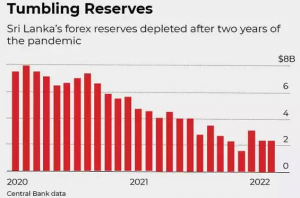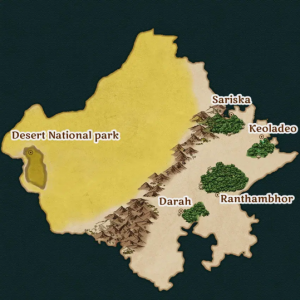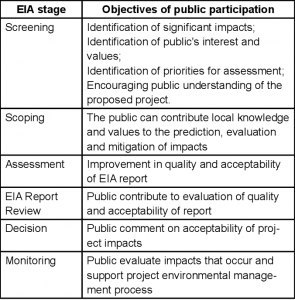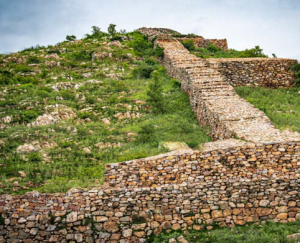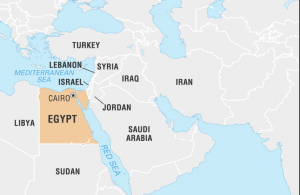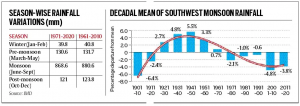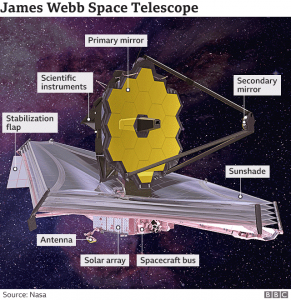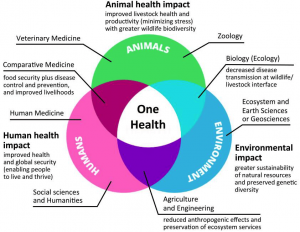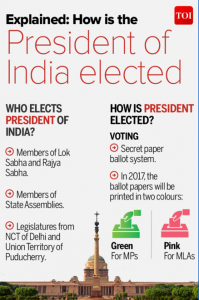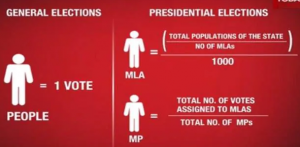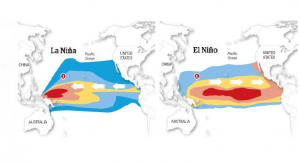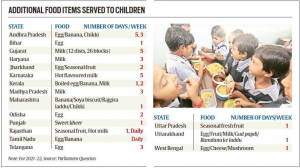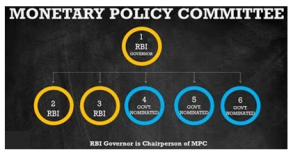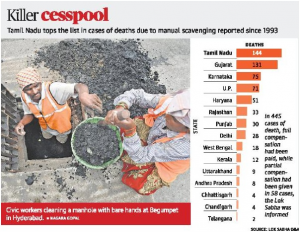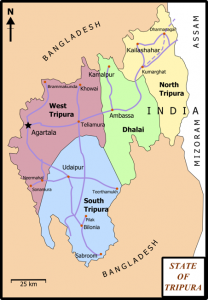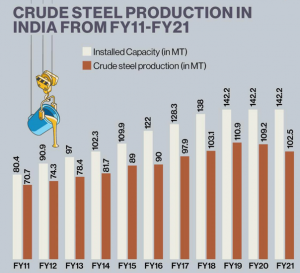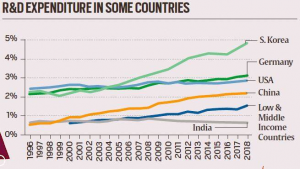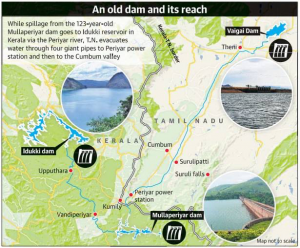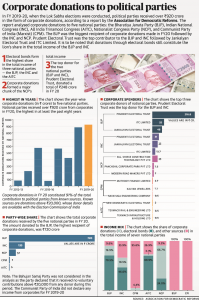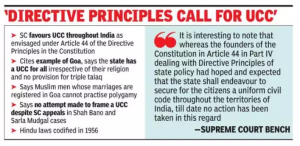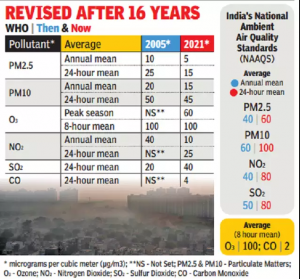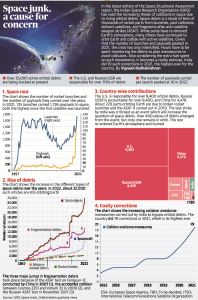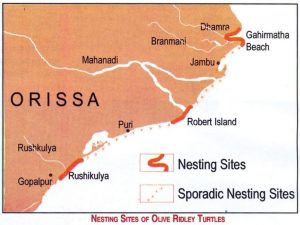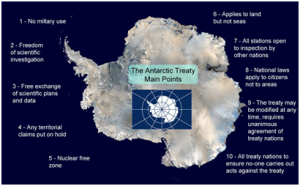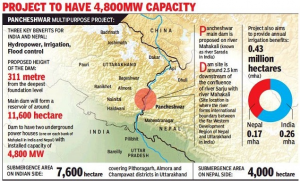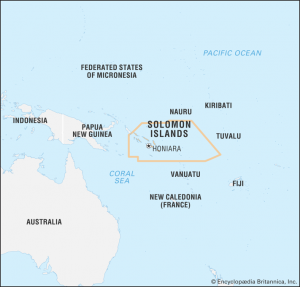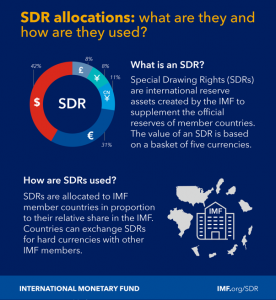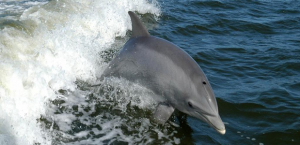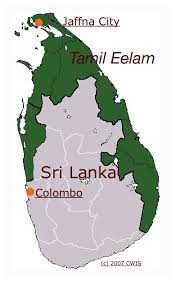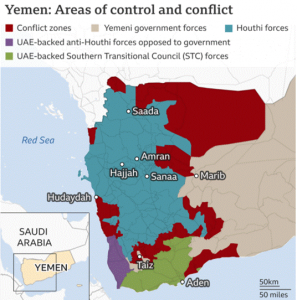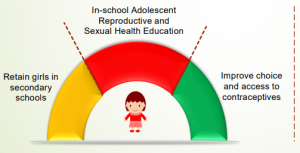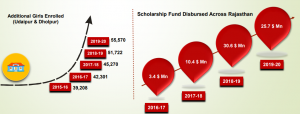DAILY CURRENT AFFAIRS (APRIL 20, 2022)
THE GOVERNANCE AND SOCIAL DEVELOPMENT
1. UNDERSTANDING THE ADDITIONAL AIRBAGS MANDATE FOR VEHICLES
THE CONTEXT: The government of India has proposed the installation of six airbags in all passenger vehicles to enhance safety for vehicle occupants.
THE EXPLANATION:
What does the proposal say?
- The general statutory rules (GSR) notification states that all vehicles in the M1 category manufactured after October 1, 2022 must come fitted with two side torso air bags in the front row at the outboard seating positions.

- The Ministry of Road Transport and Highways explained that it would be deployed to the seats or on the sides at the stipulated position inside the vehicle. It added that the deployment of the inflatable airbag in the mentioned position would help mitigate injuries in the torso region or ejection of the occupant from the vehicle.
- Further, the notification asks for deploying curtain or tube air bags to cushion the entire outboard sides of the vehicle. In the event of a rollover or a crash, this would help mitigate head injury. The notification informs the requirement for such airbags would be verified in compliance to AIS-099 standards that deals with protection of occupants in a vehicle in the event of a lateral collision.
What are the previous legislation on air bags?
- The Ministry had previously mandated deployment of airbags for the passenger on the front seat of the vehicle, next to the driver, for vehicles manufactured after April 1 2021. However, owing to the COVID-19 pandemic, the timeline for its implementation was extended to December 31, 2021.
- “This has been mandated as an important safety feature, and is also based on suggestions of the Supreme Court Committee on Road Safety”.
Will the move ensure safety in case of a collision?
- According to the U.S. National Highway Traffic Safety Administration (NHTSA), frontal air bags saved 50,457 lives between 1987 and 2017 — enough to fill a major league baseball stadium. It added airbags to prevent the passenger’s upper body or head from hitting the vehicle’s interior during a crash. The transport regulatory body says passengers must also ensure fastening their seat belts on roads.
- According to the Road and Transport Minister stated in the recently-concluded parliamentary session that 8,598 lives in 2020 could have been saved in head-on collision with the use of airbags. “Similarly, side collisions cost 14,271 lives and 31% of those or 4,424 lives could have been saved with the use of side airbags”.
2. TIE-UP BETWEEN INDIAN, FOREIGN VARSITIES SIMPLIFIED
THE CONTEXT: The University Grants Commission (UGC) has simplified the procedure for an Indian higher educational institution to offer programmes in collaboration with foreign universities by entering into a Memorandum of Understanding (MoU) with each other directly if they meet certain eligibility criteria
THE EXPLANATION:
- In its 557th meeting recently, the UGC decided that an Indian higher education institution that has a National Assessment and Accreditation Council (NAAC) grading of 3.01 or above, or is among the top 1,000 QS World University or Times Higher Education rankings, or is among the top 100 universities under National Institution Ranking Framework, will be able to tie-up with a foreign education institution which too features among the top 1,000 QS or Times Higher Education rankings.
- The previous regulations, known as the University Grants Commission (Promotion and Maintenance of Standards of Academic Collaboration between Indian and Foreign Educational Institutions) Regulations, 2016, which will now stand repealed, required two institutions to tie-up with each other after obtaining the UGC’s approval.
What was the earlier regulations?
- “The earlier regulations were too strict and there were too many bottlenecks. This simplified regulations will increase the scale at which students could benefit from such collaborations between Indian and foreign higher education institutions.
- Under the 2016 regulations, a foreign and Indian college or university could partner with each other to offer only “twinning” and “joint degree” programmes where Indian students received a degree only from an Indian institute along with a certificate from the foreign institute. But now, they can offer a third type of programme, that is, a “dual degree” programme, where both the institutes will issue a degree. Under a twinning programme, a student can get up to 30% credit utilisation of the total course from a foreign university, whereas under a joint and dual degree programme, he or she can get more than 30% of the total credits.
- These collaborations will be permitted only for the conventional mode of learning and not for distance or online learning.
3. WHO GLOBAL CENTER FOR TRADITIONAL MEDICINE AT JAMNAGAR, GUJARAT
THE CONTEXT: The World Health Organization launched its Global Centre for Traditional Medicine at a site in India aimed at unlocking its potential by blending ancient practices with modern science.
THE EXPLANATION:
- WHO global centre of traditional medicine is a major milestone for entire South East Asian Countries. This was acknowledged by Prime Minister of Bangladesh, Nepal and Bhutan through recorded video message telecasted at the ceremony.
- On this occasion, WHO President said, “Traditional medicines products are abound globally and the centre will go a long way in bringing the promise of the traditional medicine to fruition. The New Centre will focus on data, innovation and sustainability and will optimize the use of traditional medicine. He also noted that the WHO global centre for traditional medicine is a truly global project. Through this centre India will be able to take its knowledge of traditional medicine to the world and similarly world will come to India.
| Objectives:
· The primary objective of WHO GCTM is to harness the potential of traditional medicine from across the world through modern science and technology and improve overall health of the communities’ world over. The Centre will highlight the potential of traditional medicine and utilize technological advancements to promote its safe and effective use. · WHO Global Centre for Traditional Medicine in India at Jamnagar, Gujarat, will have its interim office at the Institute of Training and Research in Ayurveda (ITRA) in Gujarat. This Centre will be supported by an investment of about USD 250 million from the Government of India. |
- Traditional medicine is a key pillar of health care delivery systems and plays a crucial role in maintaining good health and well-being not only in India but across the world. In recent year, traditional medicine therapies have also seen a major transformation as usage of artificial intelligence, technological innovations have made it more accessible to masses. GCTM will aim to integrate the benefits of traditional medicine with the achievements of modern science and create a comprehensive health strategy.
4. ‘STAR RATING’ FOR PACKAGED FOOD UNLIKELY TO HELP, SAY EXPERTS
THE CONTEXT: The “health star rating” system that the Food Safety Standards Authority of India (FSSAI) plans to adopt in order to help consumers reduce their intake of unhealthy foods has been opposed by close to a dozen consumer and health advocacy groups.
THE EXPLANATION:
What is the Health Star Rating System?
- In February,2022 the FSSAI decided to adopt the “health-star rating system”, which gives a product 1/2 a star to 5 stars, in its draft regulations for front of package labelling (FOPL).
- The HSR format ranks a packaged food item based on salt, sugar, and fat content and the rating will be printed on the front of the package.
- The underlying premise of the HSR is that positive ingredients such as fruits and nuts can offset negative nutrients such as calories, saturated fat, total sugar, sodium to calculate the number of stars ascribed to a product.
- The decision was based on the recommendations of a study by the IIM-Ahmedabad the regulator had commissioned in September 2021.
- In the same meeting, the regulator decided that FOPL implementation could be made voluntary for a period of four years.
What is FoPL?
- In India, packaged food has had back-of-package (BOP) nutrient information in detail but no FoPL.
- Counter to this, FoPL can nudge people towards healthy consumption of packaged food.
- It can also influence purchasing habits.
- The study endorsed the HSR format, which speaks about the proportions of salt, sugar, and fat in food that is most suited for consumers.
- Countries such as the UK, Mexico, Chile, Peru, Hungary, and Australia have implemented FoPL systems.
What warranted the HSR rating in India?
- Visual bluff: A lot of Indian consumers do not read the information available at the back of the packaged food item.
- Burden of NCDs: Also, India has a huge burden of non-communicable diseases that contributes to around 5.87 million (60%) of all deaths in a year.
- Healthy dietary choices: HSR will encourage people to make healthy choices and could bring a transformational change in the society.
- Supreme Court order: A PIL seeking direction to the government to frame guidelines on HSR and impact assessment for food items and beverages was filed in the Supreme Court in June 2021.
Which category of food item will have HSR?
- All packaged food items or processed food will have the HSR label.
- These will include chips, biscuits, namkeen, sweets and chocolates, meat nuggets, and cookies.
- However, milk and its products such as chhnna and ghee are EXEMPTED as per the FSSAI draft notified in 2019.
THE ENVIRONMENT, ECOLOGY AND CLIMATE CHANGE
5. SCIENTISTS DISCOVER NEW EEL SPECIES FROM KERALA, BENGAL
THE CONTEXT: A group of Indian scientists have discovered a new species of eel from among specimens collected from the Kalamukku and Digha Mohana fishing harbours in Kerala and West Bengal respectively.
THE EXPLANATION:
- The newly discovered eel belongs to the Congrid eels group and has been named Ariosoma indicum. The term Indicum means that it was found in India.
- The scientists had collected 12 specimens from Kalamukku and seven specimens from Digha Mohana in 2020 for studies.

- Scientists from the Indian Council of Agriculture Research-National Bureau of Fish Genetic Resources (ICAR-NBFGR), confirmed Ariosoma indicumas a new species after two years of through research, taxonomic studies and molecular analysis.
- NBFGR is working on India’s fish genetic resources for intellectual property protection and sustainable utilisation.
- The total length of the new species is 362 millimetres. The eel has the following features according to the paper:
- A greenish-brown body, with faint dark bands on the dorsal portion of the head
- Minute dark pigmentation patches on the extremities of the lower jaw
- Bicoloured pectoral fin
- A short wedge-shaped pointed vomerine teeth patch, with three or four rows in the anterior portion
- Ariosoma indicumis possibly distributed along the Indian coast, including the coastal waters of Kerala and West Bengal. The Ariosoma genus has seven species, including the newly identified eel that have been documented in Indian waters. Globally, there are 223 species in the genus.
- Most of these eels have landed as by-catch in trawl landings, he added. Most eel groups possess less economic value and sampling of these groups has been rare in Indian waters, Mohapatra noted.
- “The new eel species is not listed as ‘Threatened’ or ‘Endangered’ by the International Union for Conservation of Nature’s Red List or the Convention on International Trade in Endangered Species of Wild Fauna and Flora”.
THE ECONOMIC DEVELOPMENTS: INFRASTRUCTURE
6. INDIA TO GET WORLD’S HIGHEST TUNNEL AT SHINKU LA PASS CONNECTING HIMACHAL PRADESH TO LADAKH
THE CONTEXT: According to the Border Roads Organisation will start the construction of the tunnel connecting Himachal Pradesh to Zanskar Valley in Ladakh by July 2022.
THE EXPLANATION:
- TheBorder Road Organisation will construct the world’s highest tunnel at Shinku La Pass at 16,580 feet to connect Himachal Pradesh to Ladakh.
- It also noted, while opening Himachal to Zanskar Road at Shinku La Pass, where over half a dozen vehicles crosses the Shinku La Pass from Zanskar side towards Manali.
- At present, one has to travel 101 km from Manali to Darcha on Leh road and thereafter, take a turn from Darcha towards Shinku La Pass and enter Zanskar valley.
Value Addition:
Zanskar Valley:
- The Chadar Trek, also known as the Frozen River Trek, is only accessible during the winter months in Zanskar.
- Zanskar is recognised for its hazardous terrain for adventure seekers, with treks like the Padum-Darcha Trek, Lugnak Trail Trek, and Zanskar-Sham Valley Trek among the options.
Shinku La:
- Shinku-La Tunnel, also known as Shinkula Tunnel or Shingo-La Tunnel, is a planned motorable tunnel linking Himachal Pradesh’s Lahaul Valley and Ladakh’s Zanskar Valley in Northern India.

VALUE ADDTION:
ABOUT BORDER ROAD ORGANISATION
- The Border Road Organization is an infrastructure building organization working under the Ministry of Defence.
- It develops and maintains road networks in India’s border areas and friendly neighboring countries.
- It was conceptualized by Pt Nehru, the First Prime Minister of India. Formed in 1960, the BRO is engaged in developing means of communication in border areas.
- The organization primarily meets the defense requirement towards infrastructure development of remote Border areas of North &North East states.
- The infrastructure development includes Roads, Bridges, Highways, Airports, Tunnels, Buildings and other structures.
- Apart from the strategic / defense requirement, the roads also cater for the socio-economic development of the nation. Border Roads Organization has contributed a lot to the socio-economic development of the North East region.
THE COVID CORNER
7. PLASMA-BASED GREEN DISINFECTANTS CAN LIMIT SPREAD OF INFECTIOUS DISEASES LIKE COVID 19
THE CONTEXT: Researchers have developed a plasma-based disinfectant generated with the help of cold atmospheric pressure plasma (CAP) which could act as a green decontaminant for COVID 19.
THE EXPLANATION:
- The COVID 19 pandemic had brought forth the urgent need for decontaminants that can limit the spread of infectious diseases through contact. However, most decontaminants consisted of chemicals which are hazardous for the environment. This encouraged researchers to work towards greener alternatives.
- A team of scientists from the Life Sciences and Physical Sciences divisions from the Institute of the Advanced Study in Science and Technology (IASST), an autonomous research Institute of the Department of Science and Technology (DST), Govt. of India, Guwahati, Assam has demonstrated that the plasma generated by cold atmospheric pressure (CAP) has the potential to deactivate SARS-CoV-2 spike protein, which binds to human ACE2 receptor for inducing viral infection and subsequent Covid-19.
- Plasma, the fourth state of matter which makes up most of the universe when produced in controlled conditions in the lab and are termed as Cold Atmospheric Pressure Plasma (CAP). The scientists passed plasma forming gases such as Helium, Argon, and Air through a high voltage electric field which led to the formation of a stable plasma with a mixture of ions, and electrons emitting a pink glow of CAP inside the reaction chamber.
- This research recently published in the international journal of the RSC (Royal Society of Chemistry) Advances shows that short-lived highly reactive oxygen and nitrogen species (ROS/RNS) generated in the plasma led to complete deactivation of the SARS-CoV-2 Spike protein occurs within 2 min of CAP treatment. The RT-PCR analysis has also established that CAP can deactivate the RNA of the SARS-CoV-2 virus.
- The researchers showed that the CAP, a plasma-based disinfection method is a better alternative to environmentally hazardous chemical-based decontamination methods. “The cold atmospheric plasma is environmentally safe since, during the entire decontamination process by plasma treatment, no chemical waste is produced.
- They also, noted that the disinfection method could further be extended for various bacterial or fungal infections.
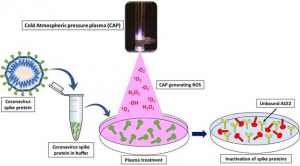
THE PRELIMS PERSPECTIVE
8. GURU TEGH BAHADUR’S BIRTH ANNIVERSARY FETE AT RED FORT
THE CONTEXT: According to Union Culture Ministry, Prime Minister will address the nation from Red Fort on April 21, 2022 to mark the 400th birth anniversary of Guru Tegh Bahadur, the ninth Sikh Guru.
THE EXPLANATION:
- Ministry officials said the Red Fort was chosen as the venue for two reasons.
- “First, it was the place from where Mughal ruler Aurangzeb gave orders for the execution of Guru Tegh Bahadur in 1675.
- Second, the ramparts of Red Fort is from where the PM addresses the nation on Independence Day, so it’s an ideal place to reach out to the people with a message of interfaith peace”.
Value Addition:
- Guru Tegh Bahadur (1621 – 1675) was the ninth of ten Sikh Gurus and the leader of Sikhs from 1665 until his beheading in 1675.
- He was born in Amritsar, Punjab, India in 1621 and was the youngest son of Guru Hargobind, the sixth Sikh guru.
- His 115 hymns are included in Sri Guru Granth Sahib, the main text of Sikhism.
- He was originally named Tyag Mal but was later renamed Tegh Bahadur after his gallantry and bravery in the wars against the Mughal forces.
- He built the city of Anandpur Sahib.
- Sikh holy premises Gurudwara Sis Ganj Sahib and Gurdwara Rakab Ganj Sahib in Delhi mark the places of execution and cremation of Guru Tegh Bahadur respectively.
- He started community water wells and langars (community kitchen for the poor and hungry).
- In 1668 in Assam, he was able to preach a treaty between the King of Ahom and Raja Ram Singh of Amber who was sent there by Aurangzeb.
- In 1672, he visited Kashmir where he saw the persecution of non-Muslims.
- The Guru attracted huge numbers of devotees and followers. This is said to have distressed the Mughal Emperor. It is also said that the Guru’s promise of protection to the persecuted Kashmiri Pandits also led to his being summoned to Delhi by the Emperor. While the Sikh faith was gathering strength, Aurangzeb was following a policy of religious discrimination and persecution in many places. Tegh Bahadur was brought before the Emperor when he reached Delhi.
- On 24 November 1675, the Guru was publicly beheaded on the orders of Aurangzeb for refusing to accept the authority of Mughal Emperor, at Chandni Chowk in Delhi. Gurdwara Sis Ganj Sahib was built in 1783 at the place where he was beheaded.
- His young son Gobind, who was only nine when his father was killed, became the tenth and the last Sikh Guru. The effect of his father’s cruel murder must have been profound on him. Guru Gobind Singh went on to become the founder of the Khalsa and challenged the authority of the Mughals.
THE PRELIMS PRACTICE QUESTIONS
QUESTION OF THE DAY
Q. Consider the following statements about the Office of the High Commissioner for Human Rights:
-
- The High Commissioner for Human Rights is the principal human rights official of the United Nations.
- The High Commissioner for Human Rights is appointed by the Secretary-General of the United Nations.
- High Commissioner for Human Rights is accountable to the UN General Assembly.
Which of the statements given above is/are correct?
a) 1 and 2 only
b) 2 and 3 only
c) 3 only
d) 1, 2 and 3
ANSWER FOR 19TH APRIL 2022
Answer: B
Explanation:
- Char Chinar, also sometimes called Char Chinari, is an island in Dal Lake, Srinagar, Jammu and Kashmir.
- It is located on the Lakut Dal (Small Dal) known as Ropa Lank (Silver Island).
- The second Chinar Island, known as Sone Lank (Gold Island), is located on the Bod Dal (Big Dal).
- It is a large, deciduous tree known for its longevity and spreading crown.
